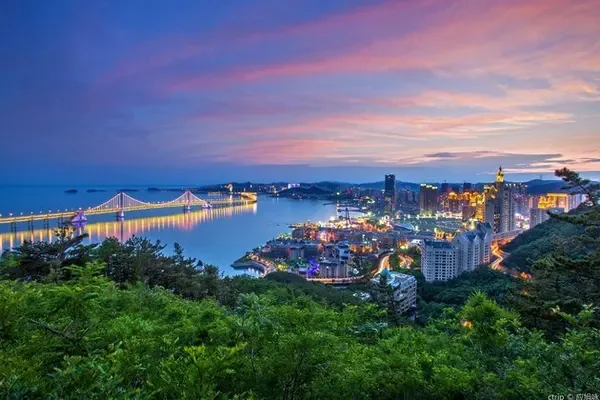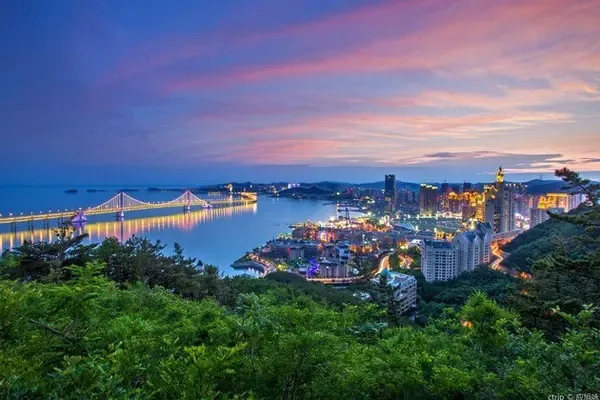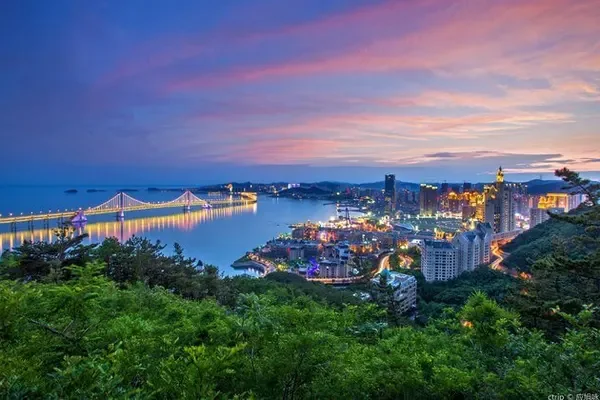Guizhou Province, referred to as "Qian" or "Gui", is located in the hinterland of Southwest China and governs Guiyang City, Zunyi City, Bijie City, Anshun City, Liupanshui City, Tongren City, Buyi and Miao Autonomous Prefecture in Southwest Guizhou, Miao and Dong Autonomous Prefecture in Southeast Qiandong, Qiannan Buyi and Miao Autonomous Prefecture.
When it comes to Guizhou, many people’s impressions are always associated with mountains, valleys, remoteness and poverty. In fact, when you really go deep into the ethnic villages of rivers, mountains and rivers in Guizhou, you will find that it is a treasure house of a nation, a miracle of nature, the green mountains and plains, the colorful The color is already the garden of God, the paradise on earth.

Guiyang is located in the middle of Guizhou and is the capital of Guizhou Province. Surrounded by mountains, Guiyang is a veritable mountain city. Guiyang is also known as "Forest City" and is known as "the second spring city on the plateau". Compared with the "first spring city" Kunming, which is warm and colorful, Guiyang is beautiful and clean. For most tourists, Guiyang is just a transit point on the journey. Few people understand Guiyang seriously, but they can't hide the simple beauty of Guiyang at all.
Lincheng Mingdu Hotel (Huaguoyuan)


Below the hotel is a snack street, taste the Kaili goose powder.

The next morning, there was fog around the hotel.

Huangguoshu Waterfall is located in the upper reaches of the Baishui River in Zhenning Buyi and Miao Autonomous County, Anshun City, Guizhou Province. It belongs to the middle subtropical zone and is a typical karst area with a mild climate and abundant rainfall. The annual rainfall is more than 1300 mm, and the rainwater is concentrated from May to July , the average monthly rainfall is above 200 mm.

The first stop: Doupotang Waterfall













Doupotang Waterfall is located 1 km upstream of Huangguoshu Waterfall in Guizhou Province. The top of the waterfall is 105 meters wide and 21 meters high. It is the widest waterfall among the Huangguoshu Waterfalls. On the top of Doupotang Waterfall is a huge melting pool with an area of 15,000 square meters, and the waterfall is formed on a calcified beach dam that is more than 100 meters long. Doupotang Waterfall also has a special phenomenon: before the flood comes, the waterfall will make a roar of "Boom. Boom", so it is also called "Roaring Waterfall".
The filming location of the ending song of the 1983 edition of Journey to the West.






The second stop Tianxing Bridge

The Tianxing Bridge Scenic Spot is located 7 kilometers downstream of the Huangguoshu Waterfall. It is a beautiful combination of stones, trees and water.



6 kilometers downstream of Huangguoshu Waterfall. There are three connected areas, namely Tianxing Basin Scenic Area, Tianxing Cave Scenic Area, and Water Stone Forest Area. Tianxingqiao Scenic Spot is densely populated with stalagmites and lush vegetation. It integrates mountains, water, forests and caves. A masterpiece through the ages".

















The ingenuity of nature is unique.










Gao Laozhuang



The first half of Gaolaozhuang is finished, and you can continue to play the second half. It is said that the essence is in the second half. It is a pity that I did not go due to time constraints!



The third stop Huangguoshu Waterfall

Huangguoshu Waterfall is the symbol of Guizhou and the pride of Guizhou. It is the largest waterfall in Asia and one of the three famous waterfalls in the world. According to relevant hydrological records, the height of the waterfall is 77.8 meters, and the width of the waterfall is 101 meters.
Xu Xiake, a famous geographer and traveler in Ming Dynasty. His ambition is in the four directions all his life, he does not avoid wind and rain, tigers and wolves, he is accompanied by long winds, clouds and mists, he eats wild fruits to satisfy his hunger, and uses clear springs to quench his thirst. (1637 A.D.) Traveled to Guizhou and was overwhelmed by the majestic appearance of Huangguoshu Waterfall. He left a beautiful poem praising Huangshu Waterfall: "A stream hangs and smashes, and Wan Lian flies into the air. The water flows down from the top of the leaves, like ten thousand pieces of crocodile silk, covering the outside of the door, and the ones that go straight down cannot be counted. When the beads are smashed and the jade is smashed, the droplets surge back, like smoke rising into the air, and the momentum is very powerful. The so-called "bead curtain hook" If you don't roll it, you can hang it on a distant peak, and it's not enough to imitate its strength." Because of Xu Xiake's description, Huangguoshu Waterfall has become more famous.

When entering the gate of Huangguoshu Scenic Area and walking towards the waterfall, you must first pass through a large bonsai garden of various shapes, such as ginkgo biloba, and a large cactus, which is more than two meters high.


Entering the scenic spot, you can hear the thunderous sound two or three miles away from the waterfall, and the water mist floating in the air can moisten your face three miles away. When you approach the waterfall and look up, you can see the surging water rushing down like a white jade belt, and then looking down, it suddenly becomes a blasting iceberg and a toppled snow peak, which collapses and rushes down the rhinoceros. At the bottom of the pool, the soaring water spray instantly turned into a curl of white mist, which drifted away with the wind and penetrated into my arms. Only the feeling, like the Smurfs, could not be found. Water wanders between heaven and earth in this way, and every time it goes back and forth, it generally moistens everything in the world.





It's hard to come by, and the rainbow in front of the waterfall is so beautiful.










Looking at the waterfall up close, if you don't put on a raincoat, it's like taking a bath.

The reason why Huangguoshu Waterfall is famous is that it is the only waterfall that can be seen from six directions: up, down, front, back, left and right. It is also the only waterfall in the world that is naturally connected by a water curtain cave, and it can be heard, viewed, and watched from inside and outside the cave. touch the waterfall.







Walking into the Water Curtain Cave, along the slippery tour path, we moved to the waterfall and looked up at the waterfall that was close at hand. Only then did we know what shock is, what is passion, what is flying down, and what is sound. Lei...the Water Curtain Cave behind the waterfall is also quite wonderful. Walking through the cave, you can watch the waterfall flying down outside the cave through the window, and deeply feel the wild horse running like a wild horse.















The forests around the waterfall are lush, the mountains overlap, the fog is filled, and the scenery is extremely beautiful.


After visiting the Huangguoshu Waterfall, I couldn't help but marvel at the uncanny craftsmanship of nature, and even marvel at the magic and creation of nature!


![Follow Xu Xiake's footsteps to visit Huangguoshu, Guizhou's business card [Complete Guide to the Scenic Area]](https://www.anyonetrip.com/uploads/202302/20/cb26fb7680e97953.webp)
